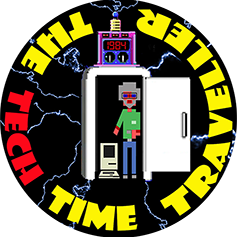Having totally missed out on an original set of TV Typewriter boards months ago, I had to proceed with Plan A, which was to make my own. And that was fine — truth be told, I was kind of looking forward to it. I like making stuff, so this was right up my alley. And plus, now I at least knew what the originals looked like. The prototype presumably would lack some features but probably otherwise be the same.
The ‘stock’ TV Typewriter consists of four boards: the mainboard (called ‘mainframe’, in the parlance of the day), timing, cursor and memory. The stackable, modular nature of the design meant other features could be added, and in fact in future articles new features would be added, including additional memory and even a UART board to turn the TVT into a (somewhat) useful serial terminal.
The first difficult bit of business was getting the right PCB stock. I really wanted the thing to have a vintage look so I could show it off to people. Most vintage boards have this green tinge to them (they call it ‘natural’). But the modern PCB stock on offer today is typically brown or other colors that were not as common or available at all back then. Searching through vendors, most of them for some strange reason wouldn’t show the backsides of their boards or even note the PCB color. I guess to modern PCB fabbers that doesn’t matter.
Now, I did find a site that offered PCBs that looked pretty damn close to the original ‘natural’ color I wanted:
http://www.americanmicroinc.com/g10-fr4/
So I got in touch. They were very friendly and responsive, and offered to send a sample sheet. I wanted to produce enough boards to build two TV Typewriters, one a replica of the prototype and the other a replica of the Radio Electronics cover unit. They informed me that to make enough single sided copper clad and cut to size would cost $400USD. Yike. But, if that got me the result I wanted, money was no object. I had tried a few shots in the dark on ebay but the PCBs that arrived (2 months later) from Hong Kong were brown.
When the sample sheet arrived it was double sided, and since I lacked etchant at that point I had no way to tell what color the PCB underneath was. Meanwhile, I found one of the rare ebay PCB vendors willing to offer info on color:
http://www.ebay.com/itm/150846166149
Again part of the problem here is we’re dealing with photographs. From my experience in railroad modeling, I knew how much a photograph could distort things. Matching color off a photograph? Yikes. But, I did have vintage boards from my computer collection from the same era, so I could check against those. Regardless of what I bought, it was going to be a crapshoot. At least in this case, it wasn’t going to be $400.
Now to order some etchant and wait another 2 months for these boards to arrive (everything from China takes forever, it seems).
